Viking God Tyr and the Binding of Fenrir Statue
This Viking God Tyr Statue with his hand in Fenrir‘s mouth is made of cold cast resin, and has a beautiful metallic bronze finish that gives it the look of metal. The statue has hand painted accents to show off the wonderful detail. It makes a great gift for lovers of Norse Mythology. Tyr is the invincible warrior of the Nordic pantheon, and far older than all the others of Asgard. Tyr is the god of single combat, victory and heroic glory in Norse mythology. He is said to have sacrificed his right hand to help bind Fenrir, the wolf who, when set free, is destined to devour the Sun. Týr is a god in Germanic mythology, a valorous and powerful member of the Æsir and patron of warriors and mythological heroes. In Norse mythology, which provides most of the surviving narratives about gods among the Germanic peoples, Týr sacrifices his hand to the monstrous wolf Fenrir, who bites it off when he realizes the gods have bound him. Týr is foretold of being consumed by the similarly monstrous dog Garmr during the events of Ragnarök. The interpretatio romana generally renders the god as Mars, the ancient Roman war god, and it is through that lens that most Latin references to the god occur. For example, the god may be referenced as Mars Thingsus (Latin “Mars of the Assembly Thing“) on 3rd century Latin inscription, reflecting a strong association with the Germanic thing, a legislative body among the ancient Germanic peoples. By way of the opposite process of interpretatio germanica, Tuesday is named after Týr (Týr’s day), rather than Mars, in English and other Germanic languages. In Old Norse sources, Týr is alternately described as the son of the jötunn Hymir (in Hymiskviða) or of the god Odin (in Skáldskaparmál).
Due to the etymology of the god’s name and the shadowy presence of the god in the extant Germanic corpus, some scholars propose that Týr may have once held a more central place among the deities of early Germanic mythology. In wider Germanic mythology, he is known in Old English as Tiw and in Old High German as Ziu, all stemming from the Proto-Germanic theonym Tiwaz, meaning “the God“. Little information about the god survives beyond Old Norse sources. Týr is the eponym of the Tiwaz rune, a letter of the runic alphabet corresponding to the Latin letter T. By way of the process of interpretatio germanica, the deity is the namesake of Tuesday “Týr’s day” in Germanic languages, including English. Various place names in Scandinavia refer to the god, and a variety of objects found in England and Scandinavia seem to depict Týr or invoke him. The name of a Gothic deity named Teiws (later Tius) may also be reconstructed based on the associated rune tyz. In Old Norse poetry, the plural tívar is used for “the gods“, and the singular týr, meaning “a god“, occurs in kennings for Odin and Thor. Modern English writers frequently anglicize the god’s name by dropping the proper noun’s diacritic, rendering Old Norse Týr as Tyr. The Proto-Germanic masculine noun tiwaz (tiwoz) means “a god, a deity“, and it probably served as a title that came to be associated with a specific deity whose original name is now lost. It stems from Proto-Indo-European deywós, meaning “celestial, heavenly one“, hence a “god” (Sanskrit devá “heavenly, divine“, Old Lithuanian deivas, Latin deus “a god, deity“), itself a derivation from dyeus, meaning “diurnal sky“, hence “daylight-sky god” (Sanskrit: Dyáus, Ancient Greek: Zeus, Latin: Jove).
The Germanic noun tiwaz is further attested in the Finnic loanword teivas, found as a suffix in the deities Runkoteivas and Rukotiivo. The Romano-Germanic deity Alateivia may also be related, although its origin remains unclear. Due to linguistic evidence and early native comparisons between Tiwaz and the Roman god Mars, especially under the name Mars Thingsus, a number of scholars have interpreted Tiwaz as a Proto-Germanic sky-, war- and thing-god. Other scholars reject however his identification as a “sky-god“, since tiwaz was likely not his original name but rather an epithet that came to be associated with him and eventually replaced it. Fenrir instead, (also known as Fenris in Old Norse), is a giant wolf from Norse mythology, born from the union between the god Loki and the giantess Angrboða, together with the queen of the dead Hel and the Miðgarðsormr. Fenrir’s name, which probably means “Wolf of the moor“, or “Wolf of the swamp“, is also used metaphorically to indicate giants, compared to wolves in several texts. His other names are Fenrisúlfr, that is “Fenrir’s wolf“, Hróðvitnir that is “wolf (enemy) of fame“, Þjóðvitnir that is “wolf (enemy) of the people“, Vánargandr that is “wolf (demon) of the river Ván” where this is the river that is created from its saliva. Fenrir is generated in the Járnviðr “Iron Forest“, where the 2 wolves Skoll and Hati also come from. Like his father, he has an out of the ordinary intelligence and even manages to speak thus making himself a strong opponent both physically and mentally. Viking God Tyr and the Binding of Fenrir Statue measures: 9.5 inches / 24 cm x 7.5 inches / 19 cm x 9 inches / 23 cm.
Viking God Tyr Statue on Amazon.
Viking God Tyr Statue on eBay.
Animals Statues, Wolves Statues, Vikings Statues and Mythological Statues.




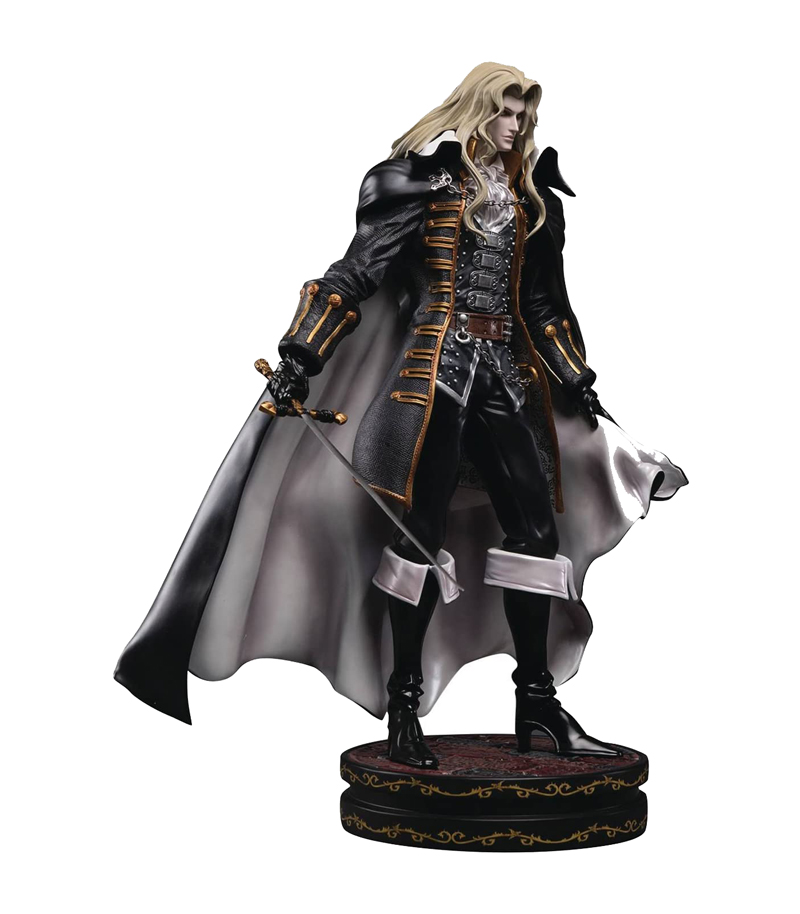
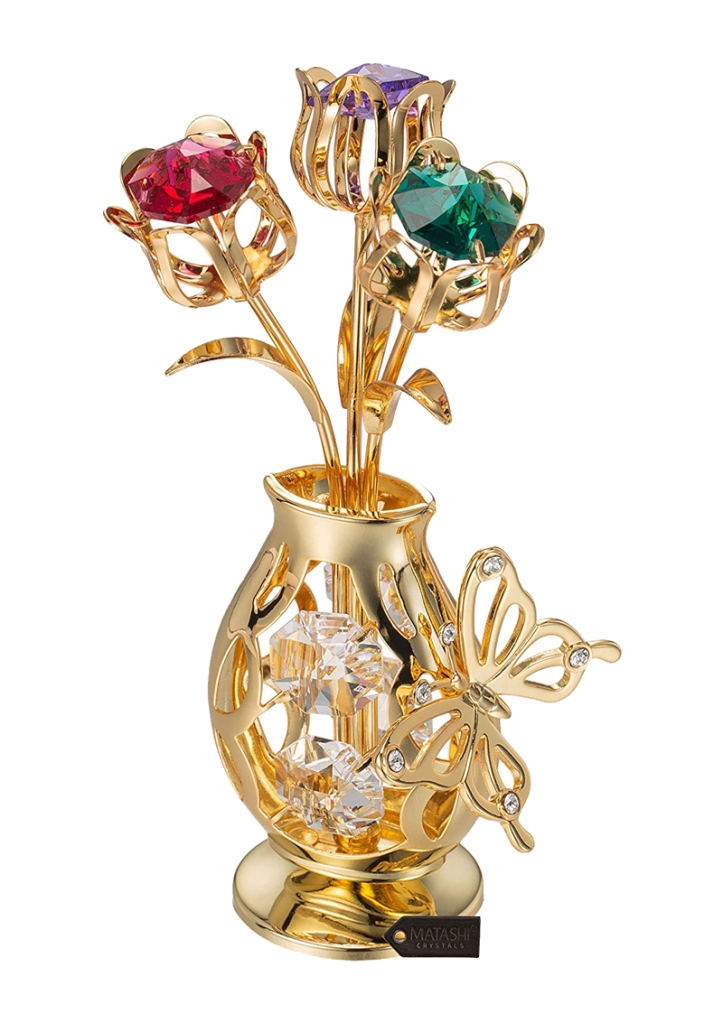
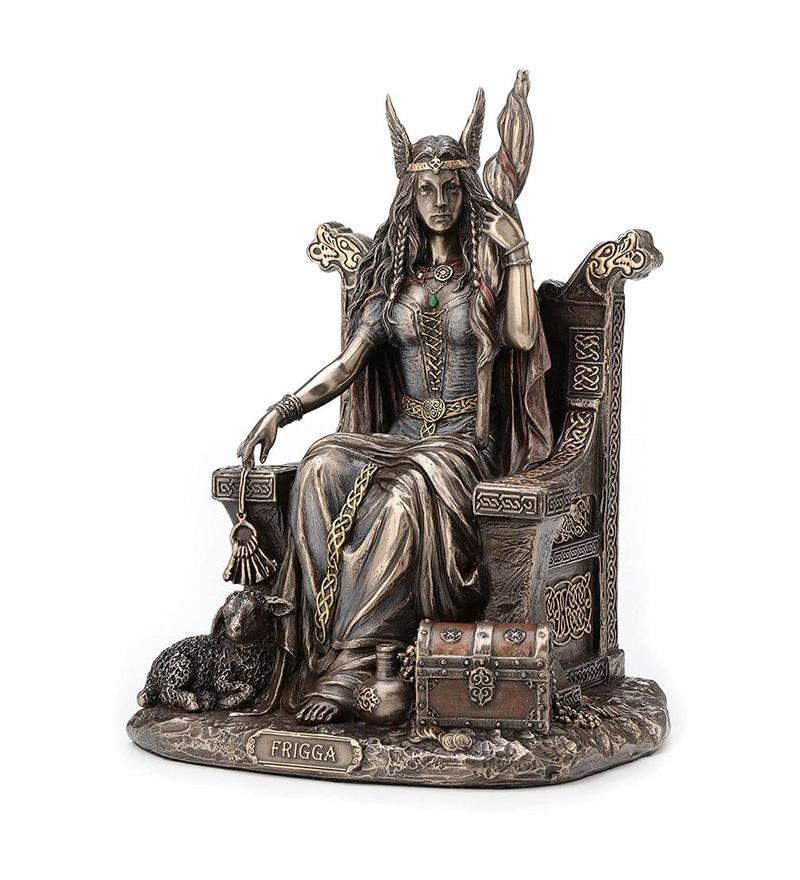
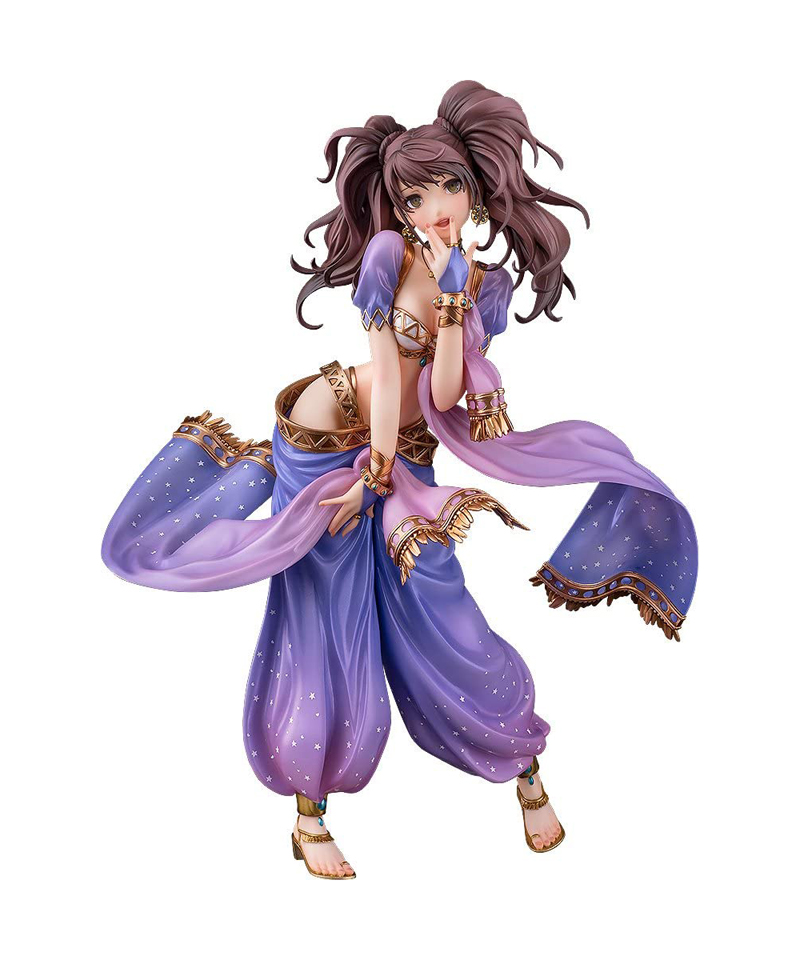

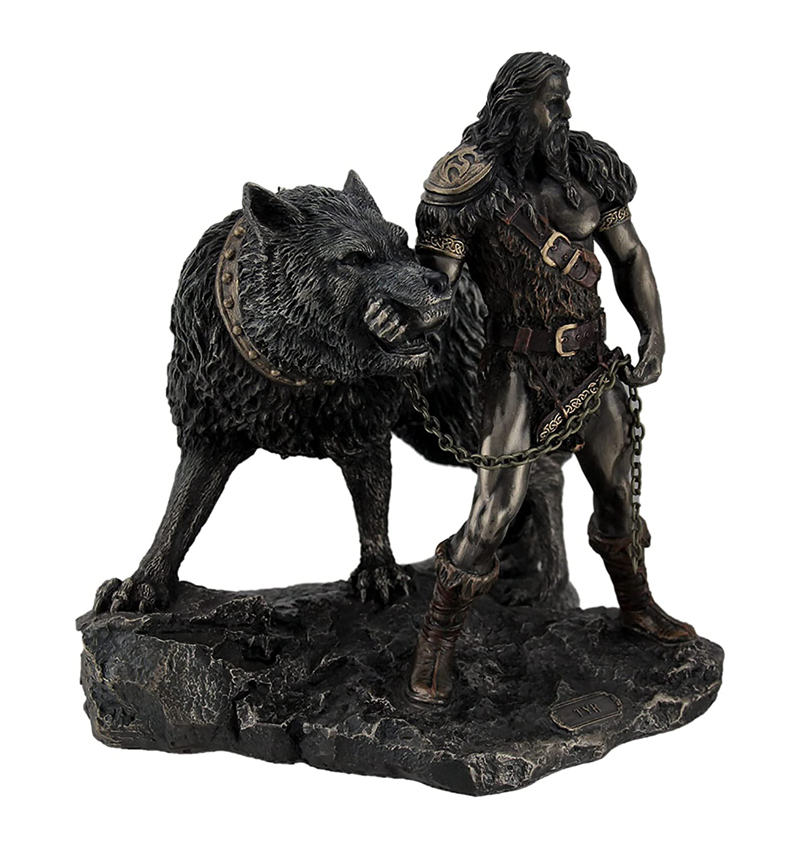

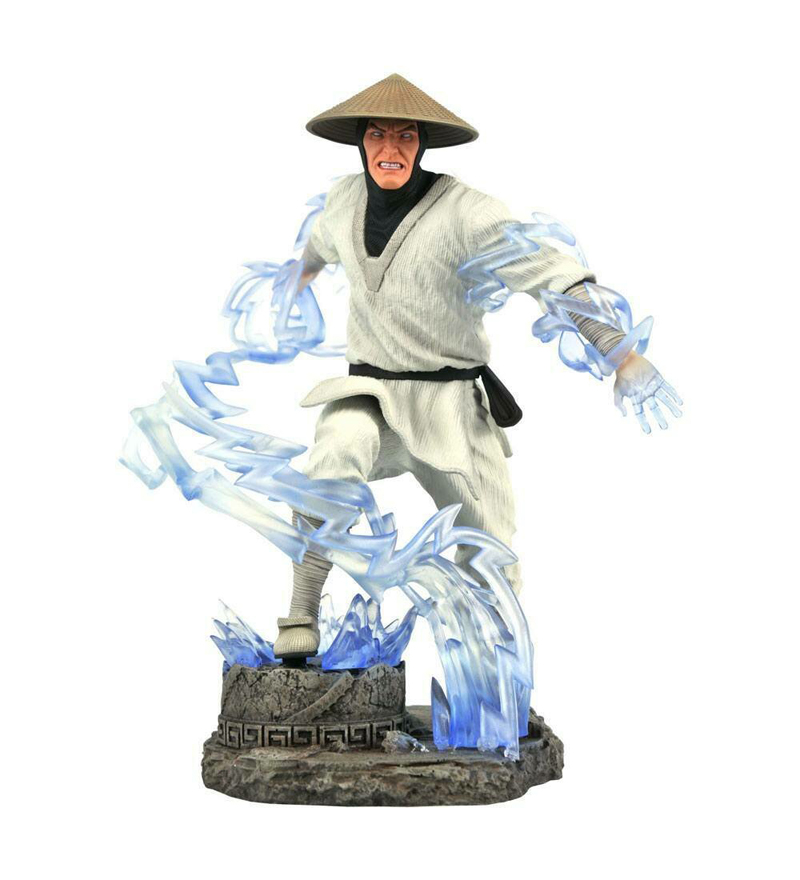
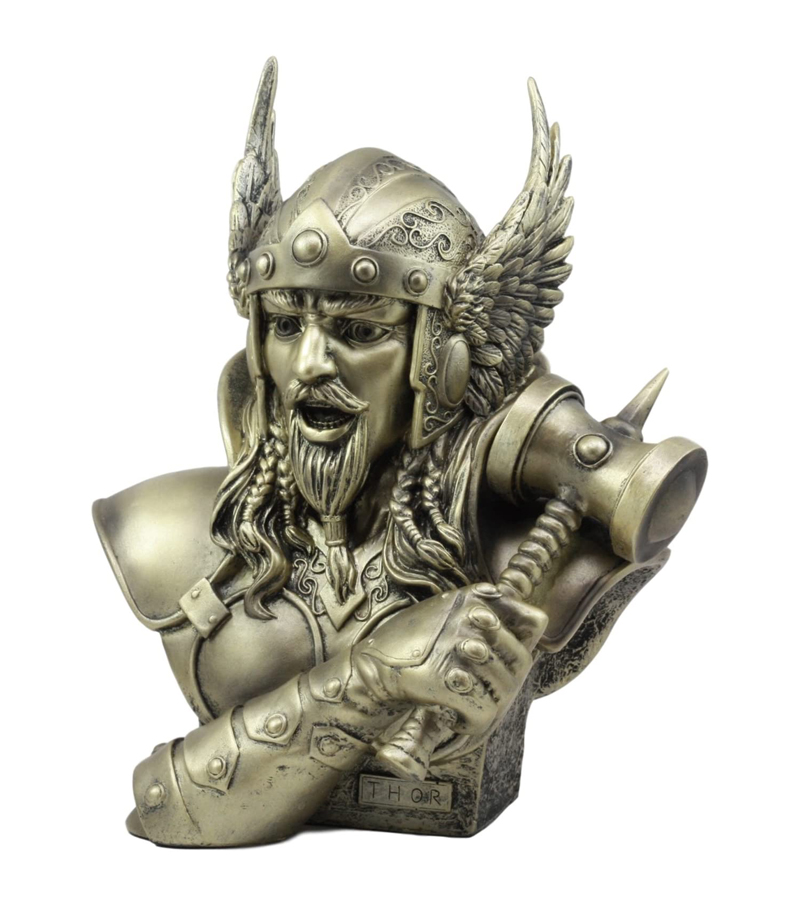
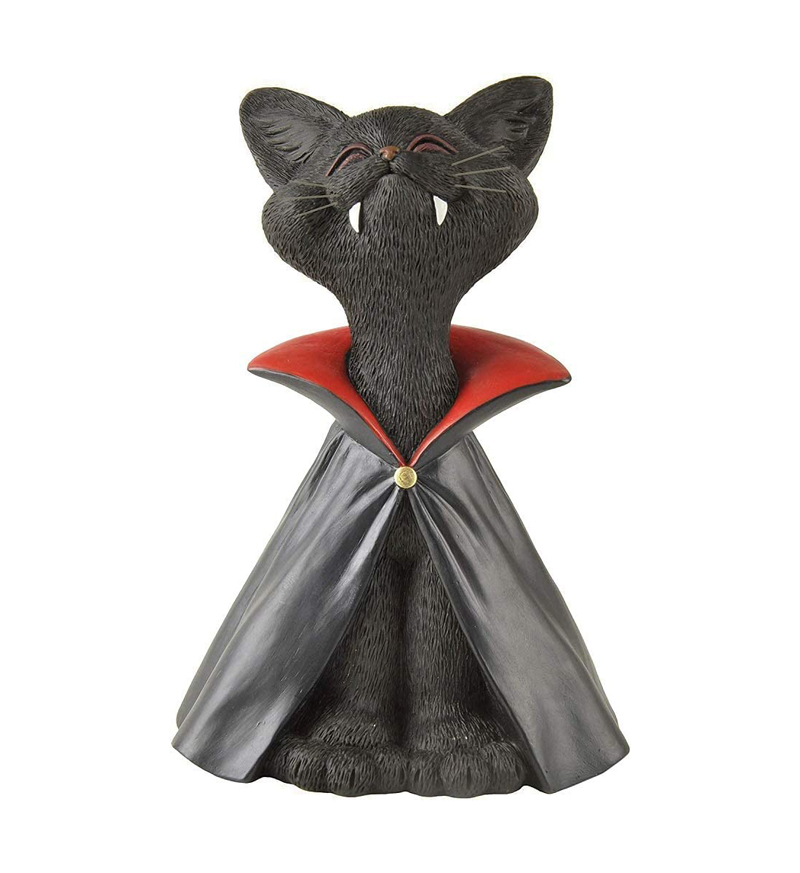
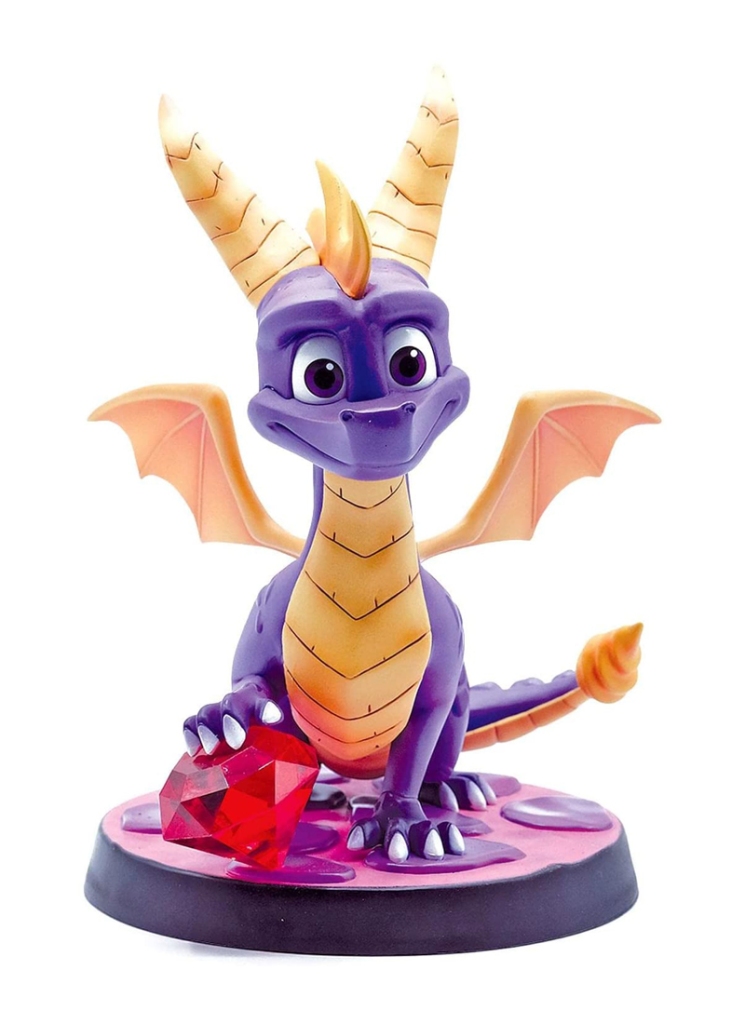
You must be logged in to post a comment.